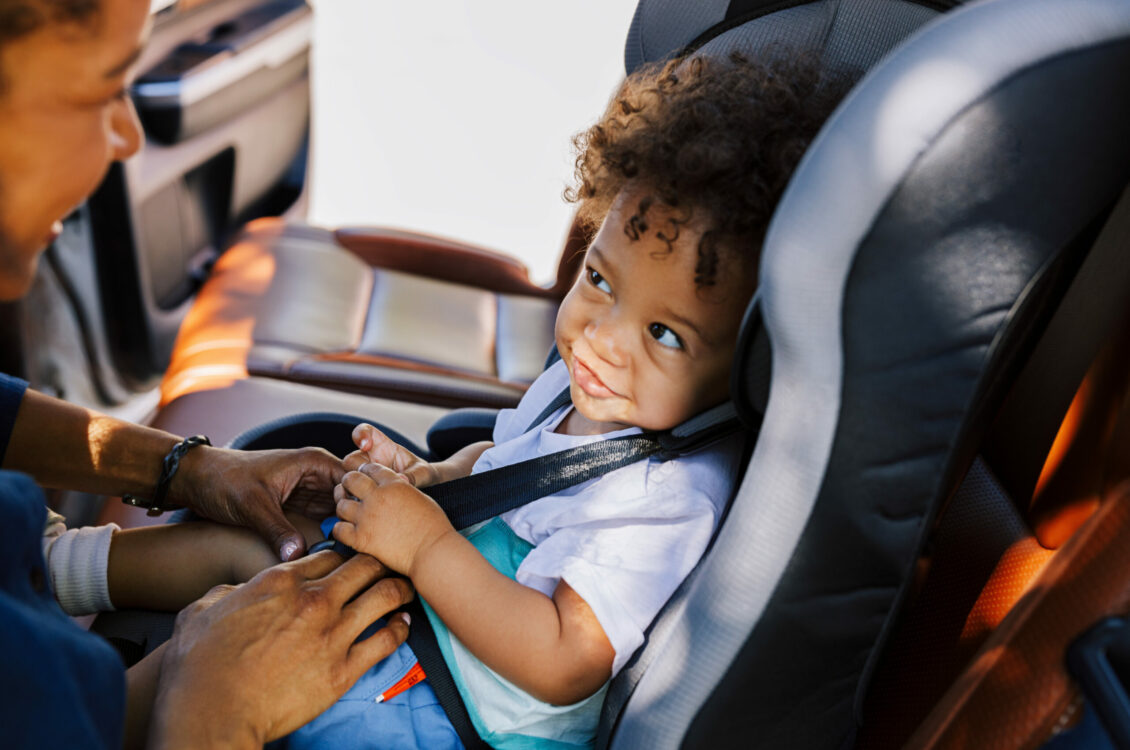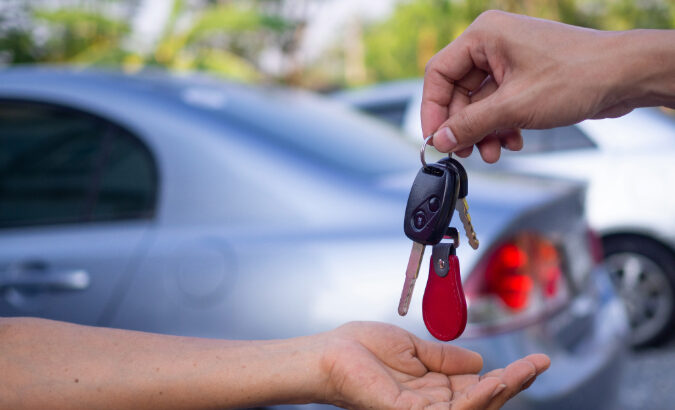
To help create a safe environment for your infant and/or young child, you need to pay attention to your vehicle and its surroundings. Here’s how to keep kids safe in and around cars:
Car-seat safety
Evaluate whether the car seat or booster seat is a proper fit for your car (not all are). The car seat must be properly installed, too. You can often get assistance from a local firehouse, police station or car seat inspection station near you where certified technicians are readily available.
There are car seat options for children based on their age and weight. As for how long to keep toddlers in a rear-facing car seat? The American Academy of Pediatrics recommends until age 2, or until they’ve reached the maximum height and weight for their seat.
“This is challenging because many parents want their kids to face forward sooner,” says Kellie O’Riordan, a health educator/certified child passenger safety instructor at Nationwide Children’s Hospital in Columbus, Ohio, and instructor for the National Center for the Safe Transportation of Children with Special Health Care Needs. “They want to interact with them. But this increases the risk of trauma in the event of a crash. In a rear-facing seat, the shell of the car seat itself and the harness will absorb the crash force, and protect the head, neck and spine. When they’re ready to face forward, keep them in a five-point harness as long as you can, until they reach the upper weight and height limits of that seat.”
Also: Never place a child in a rear-facing seat in the front seat of a car with an active passenger air bag. During a crash, the bag would likely strike the back of the seat hard enough to cause a serious, or even fatal, injury.
Buckle children in the back seat
All kids younger than 13 should ride in the back seat. They should remain in a belt-positioning booster seat until they’re 4 feet 9 inches tall. Industry research shows that protection is reduced by 40 percent when a child sits in the front. “Many parents want to ‘reward’ a child by letting him or her sit in the front seat before they reach these milestones, which creates risks,” says O’Riordan.
Keep a first aid kit in your car
Always have a first-aid kit in the vehicle, along with a manual, non-latex gloves, bandages, antiseptic wipes and an instant cold compress. Make sure the cell phone is charged and preprogrammed with emergency numbers, including your child’s doctor’s office.
Store items in the trunk
As for that kit, as well as sporting equipment, groceries, laptops and other items, store them in an area like the trunk or the rear of the minivan/SUV. “You want to eliminate the possibility of these items becoming a dangerous projectile during a crash,” O’Riordan says. “Put sports equipment like cleats, balls and bats in a big bag that is secured in the vehicle. Even a soccer ball has the potential of picking up great force during a crash.”
Don’t text and drive
More than one-quarter of all traffic crashes are linked to drivers using cell phones and texting, according to the National Safety Council. Driving safety should always be your top concern. Sending or reading just one text takes your eyes off the road for 4.6 seconds—at 55 mph, that’s enough to drive the length of an entire football field blindfolded. The benefits here are twofold: You will elevate your sense of alertness while you drive. And you’ll set a terrific example for your kids to remember when they become young drivers.
“Many of us are in a hurry, and consider our vehicle as an office and traffic lights as ‘downtime,’” says O’Riordan, whose hospital has posted a “No Texting While Driving” pledge form. “But the data is clear. Even doing it ‘just at a red light’ is very risky. You’re not paying attention to your peripherals. It’s best to put the devices away, because nothing is more important than your family’s safety.”
Driveway and parking lot safety
At least 50 children are backed over by vehicles every week, Janette E. Fennel, founder/president of KidsAndCars.org, explains, and more than 60 percent of these incidents involve larger vehicles, like trucks and SUVs. Rollovers are a hazard, too.
“Young children are impulsive and unpredictable,” Fennell says. “They still have very poor judgment and little understanding of danger. In addition, they do not recognize boundaries such as property lines, sidewalks, driveways or parking spaces.”
Keep in mind that the blind zone behind your vehicle can be more than 50 feet—and there’s a second blind zone within 6 to 8 feet of the front of the car. Walk all the way around a vehicle before you move it. If children are playing near your vehicle, make sure they move to a place where you can clearly see them before you back out or move forward.
Teach your children that a “parked” vehicle can move at any time, and that the driver may not be able to see them. When your vehicle is parked, use your safety brake to keep your vehicle from rolling away. Don’t allow children to play in the regular path of a vehicle—such as just outside the garage door. For further protection, consider adding cross-view mirrors, a rearview video camera or audible collision detectors to your vehicles.
Keep cars locked
Children will climb into a car and “pretend” to take it for a spin. It’s possible for a child to knock the vehicle into motion, especially if keys are in the ignition or the vehicle lacks safety features that prevent gear changes.
“This is a reason why you need to keep the car locked at all times,” Fennell says. “Keys and remote openers should never be within reach of your kids.”
Heatstroke prevention
Never leave your children in an automobile, even for the time it takes you to run into a store. An average of 38 children die of heat stroke every year after being left inside a hot vehicle, according to ConsumerReports.org. When it’s 70 degrees outside, the inside of an automobile can quickly reach 120 degrees. And a child’s temperature rises three to five times faster than an adult’s.
Parents don’t normally leave children in cars intentionally, but they make a mistake due to stress, distractions, a lack of sleep or a change in a routine, Fennell says. “Young children—especially babies—often fall asleep in cars, becoming quiet, unobtrusive passengers,” she explains. “Sadly for babies in rear-facing seats, many times you cannot tell if the seat is occupied when you exit a vehicle.”
To avoid this, Fennell recommends you put something you need (cell phone, handbag, wallet, etc.) on the floorboard in the back seat. Make it a habit to open the back door of your vehicle when you arrive at your destination, no matter what. You could put a stuffed animal in your child’s car seat, and move it to the front seat with you when you place your child in the car seat to remind you there’s a person back there.
How’s Your Coverage? It’s important to review your car insurance policy periodically. Learn about coverage options available from Nationwide and then discuss the best ones for you with your agent.
Texting data sources:
https://www.nbcnews.com/news/us-news/more-quarter-crashes-due-texting-talking-while-driving-study-n360981
http://www.distraction.gov/stats-research-laws/faq.html



